World Environment Day (2024) Restoring land, building resilience, and protecting public health
World Environment Day (2024) Restoring land, building resilience, and protecting public health
Published on :- July 10th, 2024
World Environment day is celebrated on 5th June 2024, with this year’s theme focusing on land restoration, desertification and drought resilience under the slogan “Our land. Our future. We are GenerationRestoration”.
The key facets of this theme include:
India, with a population of approximately 1.44 billion, is the second most populous country in the world. It is also the seventh largest by area, covering 328.72 million hectares (around 3,287,912 square kilometers), comprising evergreen forests, deserts, fertile agricultural lands, glaciers, and dunes. The nation's wide expanse experiences a variety of climatic conditions, ranging from intense rainfall to drought.
In the global arena, India is the world's largest producer of milk, pulses, and jute. It ranks as the second-largest producer of rice, wheat, sugarcane, groundnut, vegetables, fruits, and cotton. Additionally, India is a leading producer of spices, fish, poultry, livestock, and plantation crops.
The combination of high population, agricultural production, and diverse climate puts significant pressure on land, increasing the risk of land degradation. This month's on the data dialogue, we’re exploring the current state of land in India.
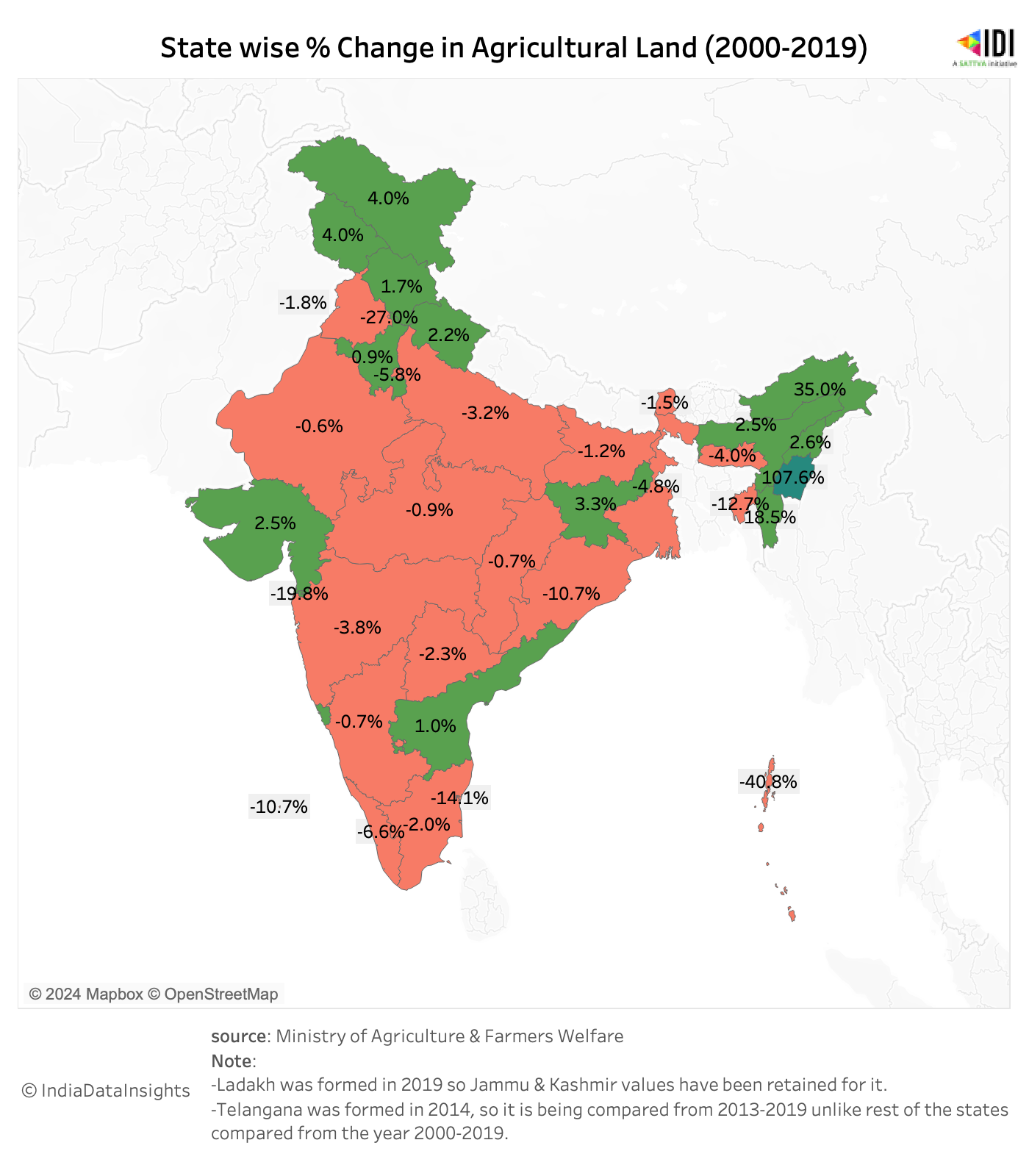
As of 2018-19, India accounts for 180.8 million hectares of agricultural land, a decrease of 4.6% since 1950. In the last 19 years (2000-19), across 23 states, agricultural land has reduced by an average of 8%, and UTs like Andaman & Nicobar islands, Chandigarh, and Dadra & Nagar Haveli experienced reductions by more than 20%. This underscores the significant impact of land degradation on agricultural areas. In contrast, Manipur and Arunachal Pradesh have seen an increase in agricultural land by approximately 108% and 35%, respectively.
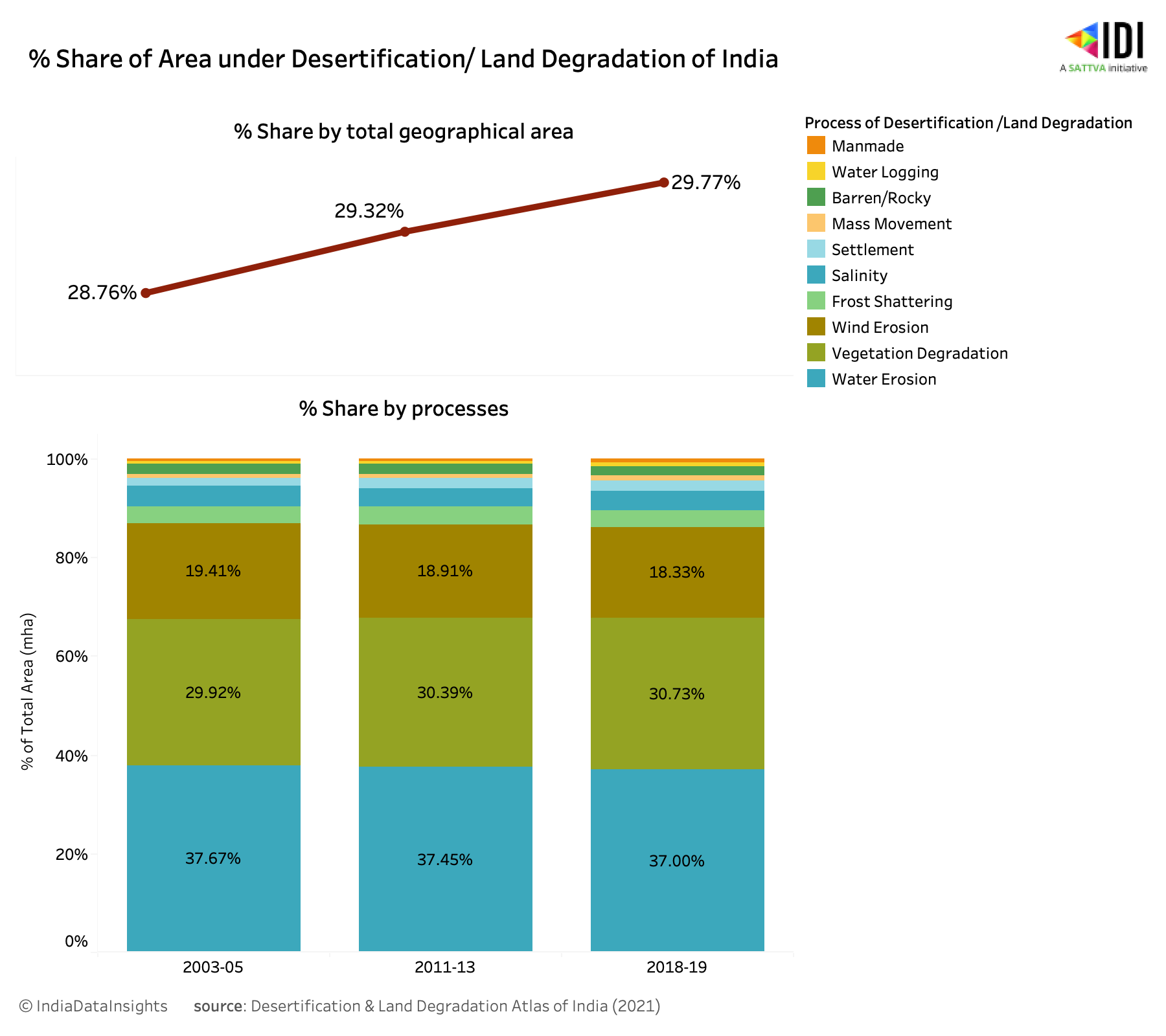
Over the last 15 years, land degradation due to various factors has increased by 3.32 million hectares (94.53 to 97.85 million hectares since 2003-05). As of 2019, 97.85 million hectares of the country's total geographical area was under degradation, which is about 1/3rd of the total geographical area (~29.77%). Out of this area, 86% (~84.21 million hectares) of the loss has been a result of due to water erosion, vegetation degradation, and wind erosion.
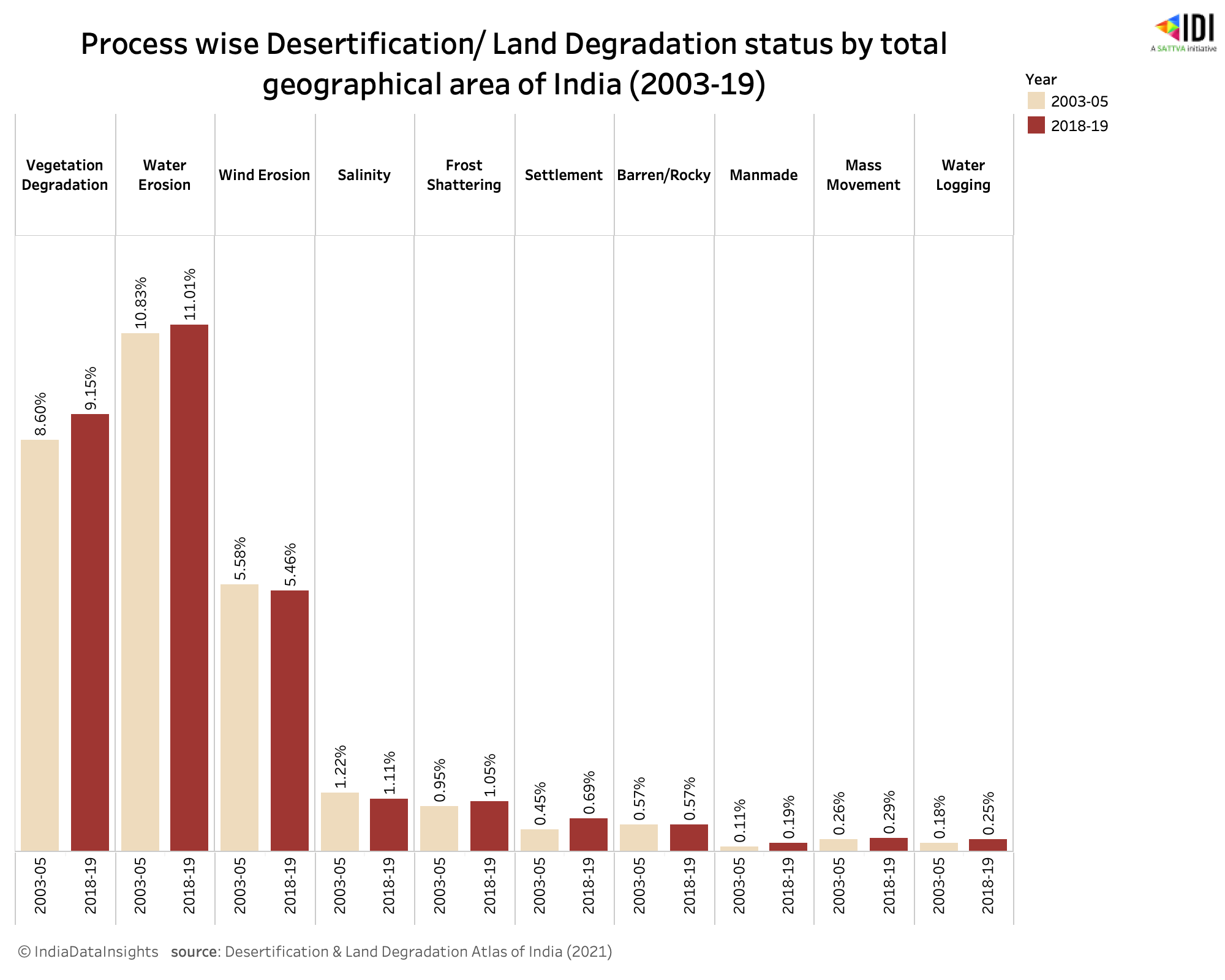
Water erosion, wind erosion and vegetation degradation have consistently remained key factors contributing to land degradation in India. By 2019, water erosion and vegetation degradation had affected 11.01% and 9.15% of India's total geographical area, respectively, and these issues have only worsened over the last 15 years. During this period, 8 out of 10 desertification processes have accelerated, further degrading the land.
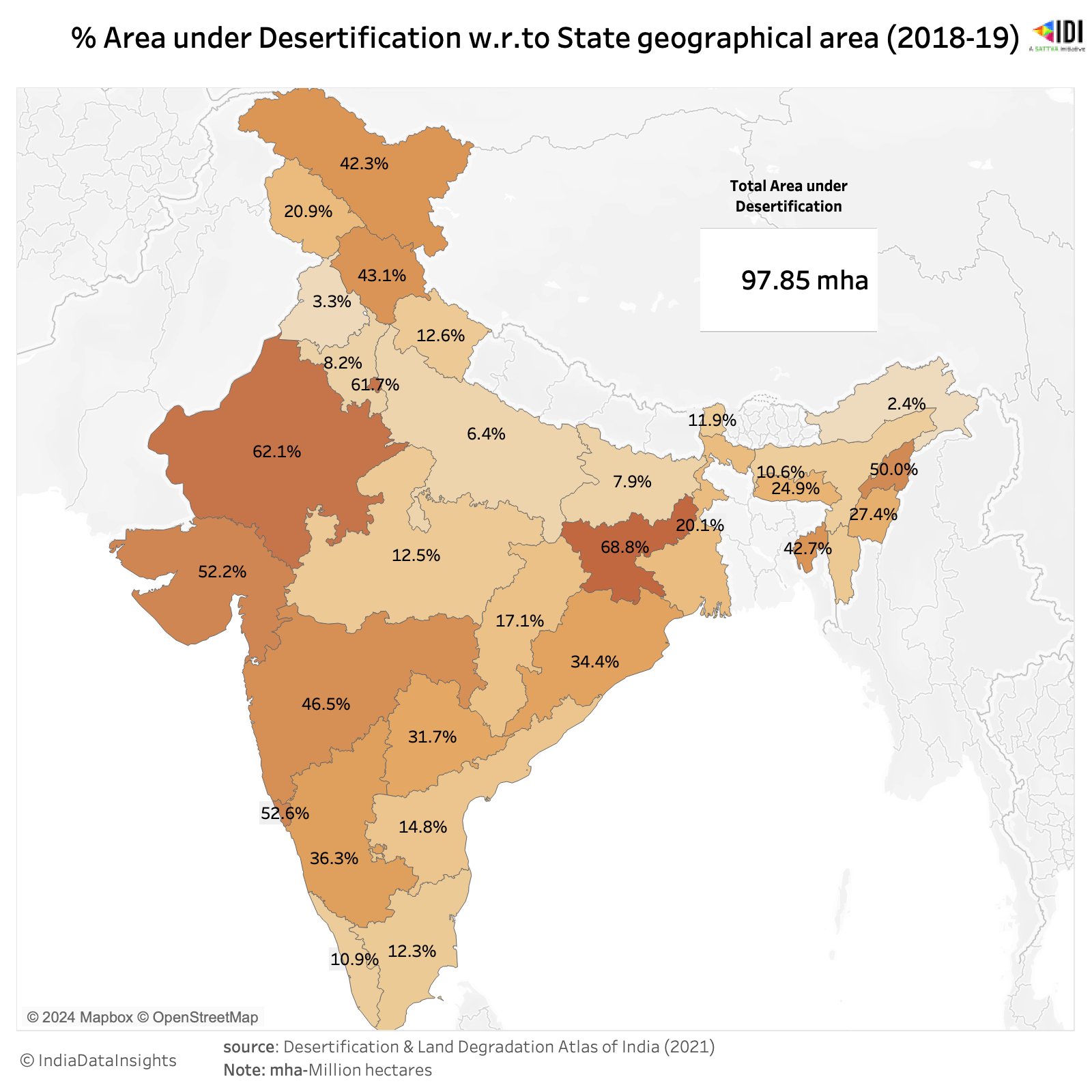
Among the states, Jharkhand, Rajasthan, Delhi, Gujarat, and Goa have over 50% of their area affected by desertification of land degradation. In contrast, states with less than 10% of their area affected include Haryana, Bihar, Uttar Pradesh, Punjab, and Arunachal Pradesh.
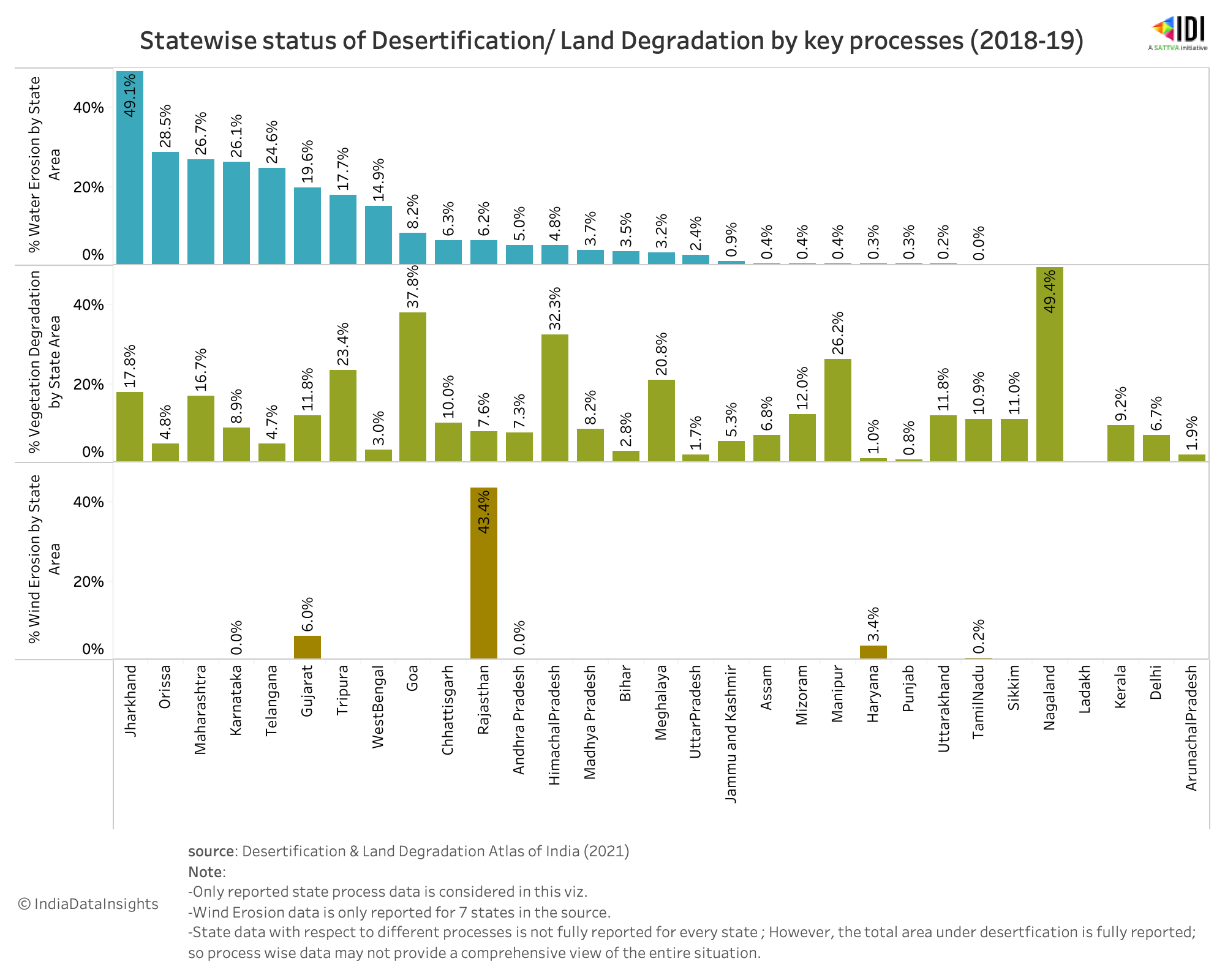
There are significant regional variations in the causes and extent of land degradation across different states in India. Wind erosion is the primary cause of degradation in Rajasthan, leading to 43.4% of land loss. In contrast, water erosion and degradation of vegetation have been the factors leading to 50% of land loss in Jharkhand and Nagaland, respectively.
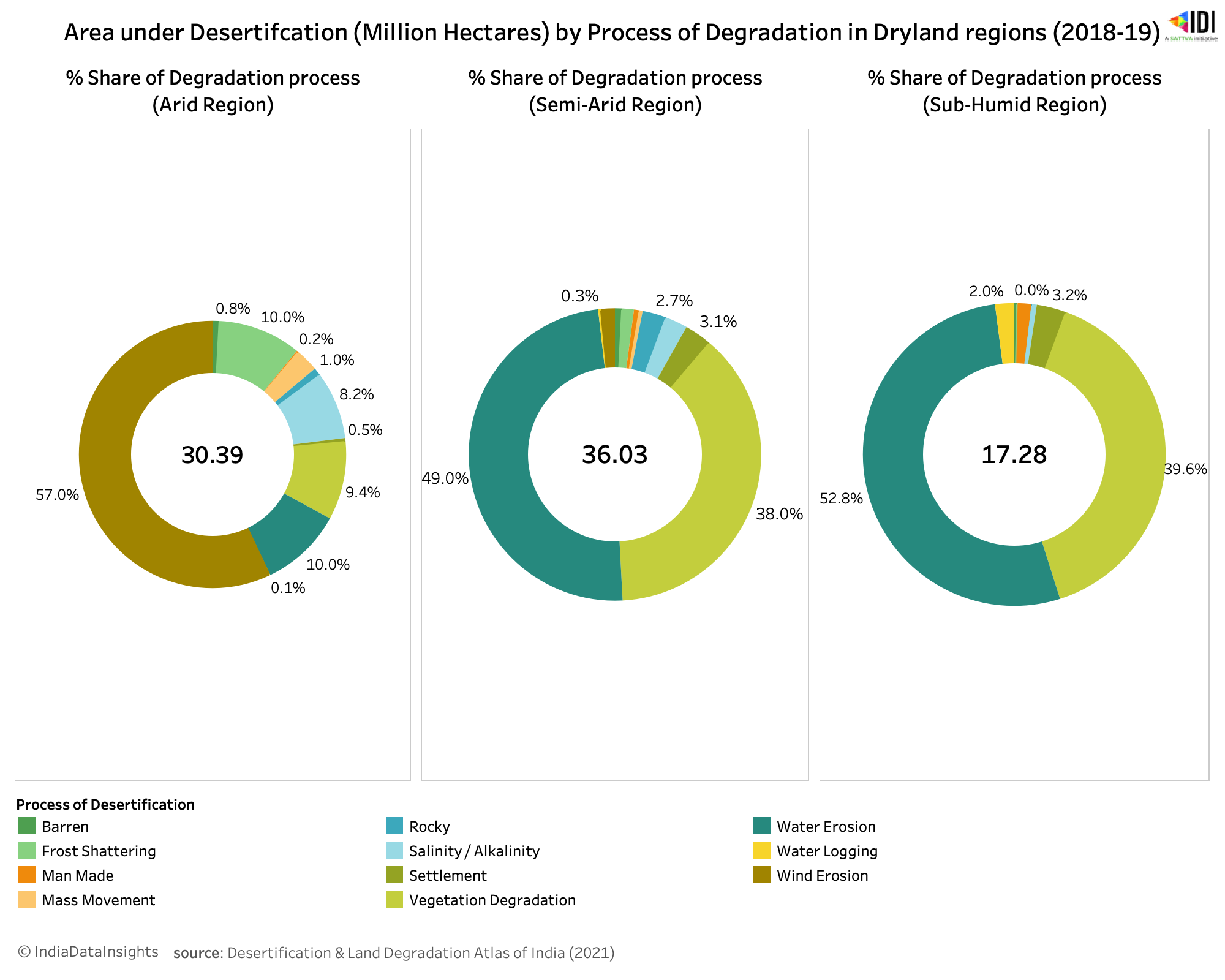
Degradation in dryland regions (arid, semi-arid, and dry sub-humid areas) is usually termed as desertification. As of 2018-19, 83.69 out of 97.85 million hectares of drylands are undergoing desertification. The leading cause of desertification is wind erosion in arid regions. While water erosion and vegetation degradation are prominent in semi-arid and dry sub-humid regions. Overall, approximately 80% of desertification in drylands occurs primarily in the arid and semi-arid regions.

Afforestation is one of the primary approaches to limit land degradation. Over the past twenty years, India’s forest cover area expanded by almost 38K sq km and tree cover by 14.3K sq km. As of 2021, Forests and trees together account for approximately a quarter (24.62%) of India’s geographical area.
Many rural populations rely on mangrove ecosystems for biomass-dependent livelihoods, and they are vital for coastal biodiversity and serve as bio-shields against extreme climate events. The current assessment shows that mangrove cover is 4992 sq km in the country, which is 0.15% of the total geographical area, and it has increased by 0.3% sq km in comparison to 2019 as well.
Improvements in forest, tree, and mangrove cover are primarily due to natural regeneration and plantation activities on suitable land, signalling positive trends in reforestation and agricultural practices.
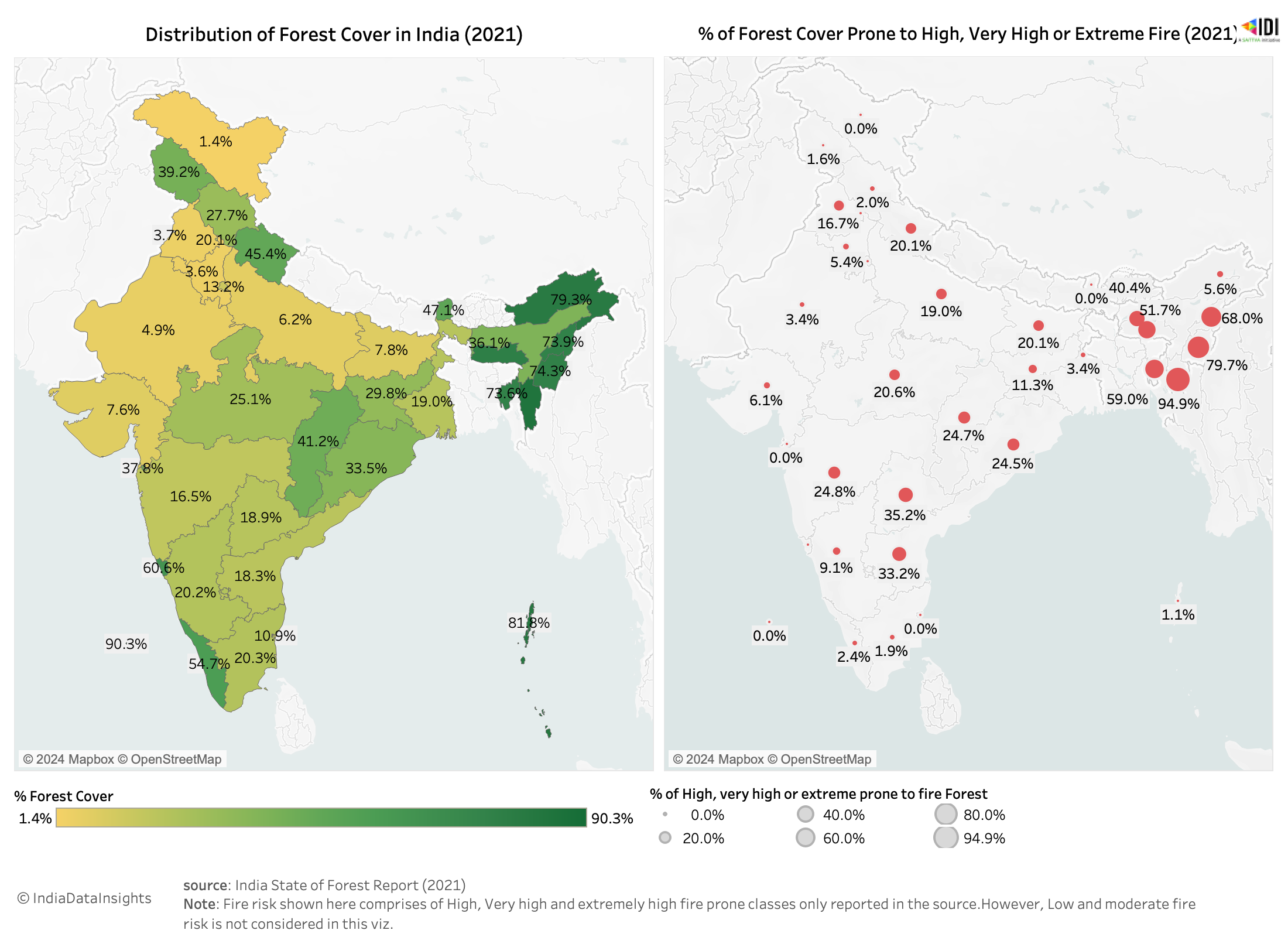
However, there are associated risks that must be addressed. The northeastern region, especially Mizoram, Manipur and Nagaland, boasts a forest cover exceeding 70% of their geographical area. Unfortunately, this also makes the region highly prone to forest fire risks.
95% and 80% of forests in Mizoram and Manipur have a high risk of fire, respectively, with 68% of forests in Nagaland forests are at the risk of forest fires. Arunachal Pradesh has a forest cover of 79.3%, but only 5.6% of the coveris prone to fire. This variation highlights the urgent need for state-specific fire management strategies.
Over the last eight years, Indian corporations have invested over 11K Crores in environmental initiatives, including sustainability, natural resource conservation, and agroforestry, with 87% of this funding, totaling 10.23K Crores, dedicated to Environment & Sustainability projects. It is crucial that CSR funds are directed towards addressing land-related challenges.
Land restoration can reverse the creeping tide of land degradation and desertification. This involves rehabilitating degraded lands to enhance biodiversity, soil fertility, and water retention through suitable techniques like reforestation, sustainable agricultural practices, and reviving natural water sources.
Addressing this problem requires a combination of sustainable land management practices and conservation techniques to curb the primary drivers of land degradation, especially state-specific strategies focusing on the primary issues affecting each state.
